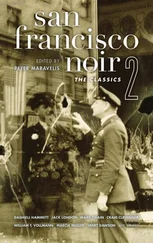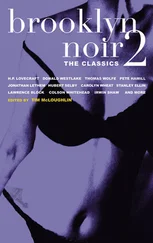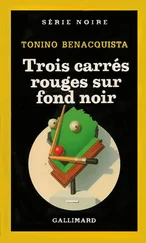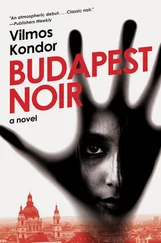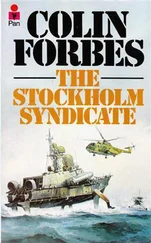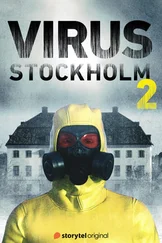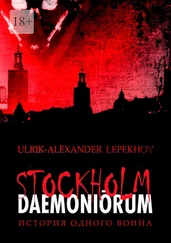Caroline Åberg - Stockholm Noir
Здесь есть возможность читать онлайн «Caroline Åberg - Stockholm Noir» весь текст электронной книги совершенно бесплатно (целиком полную версию без сокращений). В некоторых случаях можно слушать аудио, скачать через торрент в формате fb2 и присутствует краткое содержание. Город: New York, Год выпуска: 2016, ISBN: 2016, Издательство: Akashic Books, Жанр: Детектив, на английском языке. Описание произведения, (предисловие) а так же отзывы посетителей доступны на портале библиотеки ЛибКат.
- Название:Stockholm Noir
- Автор:
- Издательство:Akashic Books
- Жанр:
- Год:2016
- Город:New York
- ISBN:978-1-61775-297-1
- Рейтинг книги:3 / 5. Голосов: 1
-
Избранное:Добавить в избранное
- Отзывы:
-
Ваша оценка:
- 60
- 1
- 2
- 3
- 4
- 5
Stockholm Noir: краткое содержание, описание и аннотация
Предлагаем к чтению аннотацию, описание, краткое содержание или предисловие (зависит от того, что написал сам автор книги «Stockholm Noir»). Если вы не нашли необходимую информацию о книге — напишите в комментариях, мы постараемся отыскать её.
Copenhagen Noir
Helsinki Noir
Stockholm Noir — читать онлайн бесплатно полную книгу (весь текст) целиком
Ниже представлен текст книги, разбитый по страницам. Система сохранения места последней прочитанной страницы, позволяет с удобством читать онлайн бесплатно книгу «Stockholm Noir», без необходимости каждый раз заново искать на чём Вы остановились. Поставьте закладку, и сможете в любой момент перейти на страницу, на которой закончили чтение.
Интервал:
Закладка:
The late fifties and early sixties were an odd time in the history of Stockholm. Huge swaths of downtown were demolished. It was the largest rearrangement of an inner city in Europe, especially for a country that had not been bombed during the war. That area we now call “city” looked so much like a war zone then that my pal from art school, Håkan Alexandersson, and I made a short war film there in 1960. In those days, every household in Sweden had received a brochure called If the War Comes about the dangers of falling atomic bombs. We titled our film Until the Fire Is Out due to the ridiculous advice in that brochure which in our minds minimized the danger. If your clothes start to burn, roll on the ground until the fire is out.
One afternoon, I had a desire to search for any of Wahlberg’s leftover negatives and — with the help of a crowbar — I broke open a Masonite wall to find a closet-sized space of about two square meters. Both walls had cracks. The space itself was empty. Of course, it felt only natural to test one of the cracks with my crowbar. A layer of broken bits fell to the floor. Dust flew up and I couldn’t see much for a moment, but when it settled, I found a very old door. Crack! The crowbar did its work; the door fell toward me and I jumped out of the way. The dust had to settle once more before I realized I’d found an old passage to the building next door, Drottninggatan 35.
There were a number of conspiracy theories in those days. One of the basic theories speculated that the owners of Stockholm’s old buildings let them decay until tearing them down would become inevitable. Repairs and renovations were held off until it was too late to do anything. Over eight hundred buildings were torn down in Stockholm from the midfifties to the midseventies. Most of these had been constructed in the eighteenth and nineteenth centuries. Very few were considered part of our cultural inheritance. One exception was my building, Drottninggatan 37, which, of course, was irritating for the developers. All they saw was space to exploit with a protected building in their way. That they would go so far as to set fires to the buildings themselves — that was a theory that even I, a diehard Communist, found hard to believe.
All that time, I had to force myself to believe that there had to be a reason for the social heartlessness in Sweden, the architectural helplessness in Stockholm, and my own situation.
Actually, I have to say that my paranoia was proven justified, because I came to be interrogated by two policemen who wanted me to confess that foreign powers had employed me to bring anarchy to the streets. They had three possible employers in mind: Albania, Cuba, or China. I was brought to the police station on Kungsholmen and I would probably have laughed in their faces about the absurdity of the accusation (these poverty-stricken countries couldn’t afford anything like this) if the policemen hadn’t been so intimidating. They placed me on a small chair in the middle of the room — well, I’ve described this matter in detail before. It had to do with an art installation I’d had at Galleri Karlsson, a little space near Odenplan. And I was declared guilty by the judge, but not for spying, as the police had hoped. Just for desecration of a state symbol and for agitation. The latter stemmed from a lithography where I’d written, Betray your country, don’t be nationalistic.
I was prepared to be followed after I left the police station. I kept my eye out for agents, peering from a window on the second floor, a window in the same abandoned office where I’d met my married friend. Agents in American films have black suits, ties, and dark sunglasses. Not in Sweden. Here they sport what we call leisure wear in English. Light gray jackets, brown pants, black shoes with rubber soles. Perhaps a water-repellant hunter’s cap with a small brim — you know, those hats you can fold up and put in your pocket in case you need to slightly change your appearance. For the same reason, the jackets could be worn inside out. Their clumsy shoes, for larger-than-average feet, always gave away who they were. At Galleri Karlsson, we had called them “Säpo’s Art Club.”
At first they didn’t scare me. But one evening at twilight, as I went through the floors of my building, I found about ten kerosene cans behind a stack of empty cardboard boxes. I’d lived in other places that had kerosene heat, but kerosene was not used in Drottninggatan 37. This very building, where I stood with my flashlight, had no kerosene furnaces. It had had water circulating in a central heating system before it was all cut off. No utilities in the building were functional. I had a moment of clarity. The Three Wise Men! The increase of arson! That’s how the final destruction of historic buildings would be handled.
A bad night. I tossed and turned constantly. My broken sleep was then interrupted by a thundering sound. I got up, fully dressed as always because of the chill. Smoke was seeping into Wahlberg’s studio, the second time this week. Definitely not a coincidence. I was coughing as I ran to my emergency exit — the door I’d found hidden in the closet, the one leading to the building next door. I could hear screaming from the floors below. I stumbled in the darkness, tripping over all kinds of garbage. I found myself in the decaying attic of Drottninggatan 35 before I had any time to think. I’d left my camera case behind. My Hasselblad, the ping-pong table — all gone. Like the paddles and ping-pong balls. Just like before.
Perhaps those skulking men committed murder. Perhaps not. In extreme situations, certain emotions, like empathy and indignation, disappear. Those screams from below, they came back to me afterward, much later, as an extra-horrible detail in my memory. I should have acted differently. I should have opened the door to the stairway and found the others, shown them the way out. Mr. Frost, with his weatherworn face and his silence, comes to me sometimes at night. I’d heard his screams before, in my car. Did I hear them then? A few minutes have been erased from my memory. In a smoking world, a person can become a robot on autopilot.
The building was later rebuilt with a poured-cement façade to imitate its original wooden one. Behind this façade, there’s a modern office building. On the ground floor, there’s an elegant shoe store.
I still feel, even after such a long time, that nobody takes me seriously.
Nineteen Pieces
by Carl-Michael Edenborg
Translated by Caroline Åberg
Slakthusområdet
19
— No more now, miss. That’s enough.
My swollen face in the mirror stares back at me. My mouth speaks without intention. My pupils are pistol muzzles, my forehead beaded with sweat, jaws working. There are furrows in my brow that go so deep the ice-cold restroom lighting doesn’t reach the bottom of them.
My dry lips part again.
— Just a little more.
I shake my head, take the wallet from my purse; with trembling hands I manage to open the zipper, take out the stamp-sized paper envelope, stick my finger in it, lick off the bitter, putrid powder, rub the last of it into my gums.
— Keep it together, Bengtsson!
I clench my teeth. My lips pucker. A denture sends a sharp pain into my jaw. I clear my throat, put the wallet back in my purse, and leave the restroom. My half-finished beer is there on the counter. Branco looks at me with lazy eyes as I swallow the last of it, washing away the acrid with the bitter.
— What do I owe you?
It’s a running joke of ours. He snorts. A few free beers is a good price for a friend at the CID.
— News?
— Someone sent me a piece of flesh at work yesterday.
Читать дальшеИнтервал:
Закладка:
Похожие книги на «Stockholm Noir»
Представляем Вашему вниманию похожие книги на «Stockholm Noir» списком для выбора. Мы отобрали схожую по названию и смыслу литературу в надежде предоставить читателям больше вариантов отыскать новые, интересные, ещё непрочитанные произведения.
Обсуждение, отзывы о книге «Stockholm Noir» и просто собственные мнения читателей. Оставьте ваши комментарии, напишите, что Вы думаете о произведении, его смысле или главных героях. Укажите что конкретно понравилось, а что нет, и почему Вы так считаете.


